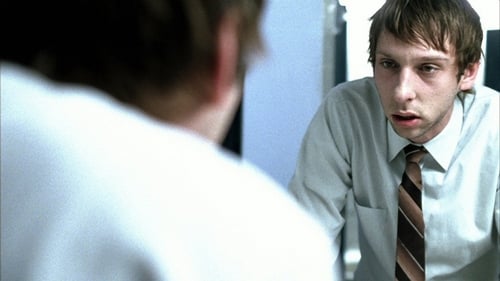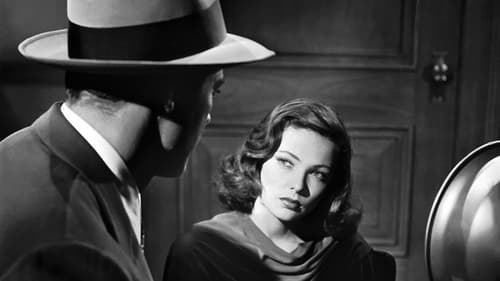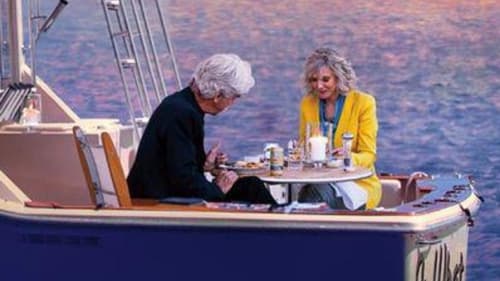A Sunday at 105 (2007)
Gênero : Documentário
Runtime : 13M
Director : Daniel Léger
Sinopse
Documentary tribute from a great-grandson to his great-grandmother. In a Sunday, filmed in her daily life, Aldéa speaks of universal subjects in her own way.

Mason é um artista talentoso, recluso e paranóico que vive no anonimato trabalhando em seu cubículo repetindo as mesmas frases no seu trabalho de operador de telemarketing. A única pessoa que lhe dá um pouco de atenção é seu chefe e mesmo assim não é uma relação muito amigável. Mas tudo muda quando ele conhece Amber, que aceita posar para seus quadros. Mas há determinados sentimentos que deveriam sempre permanecer ocultos. Para romper com seus problemas do passado será necessário muito mais do que uma camada de tinta.

Baseado em um conto de Vera Caspary, este mistério sobre o assassinato da personagem principal mostra um detetive se apaixonando pelo retrato dessa bela vítima. Ele investiga três suspeitos para tentar solucionar o crime: um jornalista, o noivo de Laura, a vítima, e sua tia.

Em Nova Iorque, um escritor grosseiro e sarcástico (Jack Nicholson) tem como alvos principais um artista gay (Greg Kinnear), seu vizinho, e uma garçonete (Helen Hunt) que o atende diariamente e se desdobra para cuidar do filho, que tem asma crônica. O destino vai fazer com que eles fiquem muito mais próximos do que poderiam imaginar.

Após uma perda repentina, Carol (Blythe Danner), uma viúva de 70 anos, tenta encontrar um próposito para sua vida. Ela decide, então, começar a namorar de novo e se encontra envolvida com dois homens completamente diferentes: Bill (Sam Elliott), um senhor que gosta de aproveitar o presente, e Lloyd (Martin Starr), um homem mais novo que limpa a piscina dela e que também procura um sentido para sua vida. Em meio a essa situação inesperada, Carol é forçada a adotar uma nova perspectiva sobre o que significa envelhecer.

In this film, Paul Tomkowicz, Polish-born Canadian, talks about his job and his life in Canada. He compares his new life in the city of Winnipeg to the life he knew in Poland, marvelling at the freedom Canadians enjoy. In winter the rail-switches on streetcar tracks in Winnipeg froze and jammed with freezing mud and snow. Keeping them clean, whatever the weather, was the job of the switchman.

This film begins, so to speak, where ‘Vol spécial’ left off. The reality of migration bears its teeth: Following a scuffle, 20-year-old Koumba from France is sent back to the place where she was raised – Senegal. She returns to the lost village of her ancestors hysterical, argumentative and unproductively rebellious. Now the mother of a toddler, she continues to come to terms with the two cultures; the outcome is unforeseeable, as is the outcome of this cinematic long-term observation. The risk of its failure due to its protagonist is palpable. But Koumba’s fascinating metamorphosis is also obvious, her body and character have taken on a more harmonious nature. All hope is not lost.

'if you only had one year left of your life, what would you do?' This question asks Swiss author Franz Hohler. His answer: 'Make death your adviser to live life to the fullest.' He is one of several carefully chosen Swiss citizens who give us an insight into their personal views on life and death. Besides these colorful, oftentimes funny quotes we meet Tom, a 50-year old male that has been diagnosed with incurable brain tumor. Contrary to what one would expect, Tom takes his sickness not as a burden but as a chance and lives his life happier than ever before. This to the surprise of his family and friends and above all - himself. The film encourages people to live life more consciously.

This cinematic portrait shows the Austrian filmmaker Ulrich Seidl at work. The much-discussed ‘Seidl method’ is conveyed here vividly and directly: The camera watches over Seidl’s shoulder during the filming of his new production IM KELLER, and observes him at the rehearsals for his latest theatre production ‘Böse Buben / Fiese Männer’. The film paints the picture of a fascinating and exceptional artist using a combination of extensive interviews and excerpts from earlier works.

An artist receives the visit of Grogg, an animated captain, to draw his portrait

Peter Hurley, one of the most successful and well known headshot photographers of all time has teamed up with Fstoppers to produce a 4 hour tutorial exposing all of his tips and tricks that he has learned over the past 8 years as a professional photographer. This video touches on all aspects of running a successful photography business but Peter’s main goal is to teach the average person about the subtleties of the human face so that you can make any human in front of your camera look interesting.

The life of Henri de Toulouse Lautrec, famous french painter, who lived, enjoyed, loved in the late 1800s Paris' Montmartre cultural life. He suffered from suffered from congenital health conditions traditionally attributed to inbreeding. His lifestyle and work are a testimony of the late-19th-century parisian bohemian lifestyle, as he was commissioned to produce a series of posters for the Moulin Rouge cabaret opening. As an alcoholic, he was addicted to absinthe. The movie related his love affair with the french painter Suzanne Valadon.

Stop for Bud is Jørgen Leth's first film and the first in his long collaboration with Ole John. […] they wanted to "blow up cinematic conventions and invent cinematic language from scratch". The jazz pianist Bud Powell moves around Copenhagen -- through King's Garden, along the quay at Kalkbrænderihavnen, across a waste dump. […] Bud is alone, accompanied only by his music. […] Image and sound are two different things -- that's Leth's and John's principle. Dexter Gordon, the narrator, tells stories about Powell's famous left hand. In an obituary for Powell, dated 3 August 1966, Leth wrote: "He quite willingly, or better still, unresistingly, mechanically, let himself be directed. The film attempts to depict his strange duality about his surroundings. His touch on the keys was like he was burning his fingers -- that's what it looked like, and that's how it sounded. But outside his playing, and often right in the middle of it, too, he was simply gone, not there."

Sylvia Kristel – Paris is a portrait of Sylvia Kristel , best known for her role in the 1970’s erotic cult classic Emmanuelle, as well as a film about the impossibility of memory in relation to biography. Between November 2000 and June 2002 Manon de Boer recorded the stories and memories of Kristel. At each recording session she asked her to speak about a city where Kristel has lived: Paris, Los Angeles, Brussels or Amsterdam; over the two years she spoke on several occasions about the same city. At first glance the collection of stories appears to make up a sort of biography, but over time it shows the impossibility of biography: the impossibility of ‘plotting’ somebody’s life as a coherent narrative.

The story of a Grandmother who swims every day in the sea whatever the weather.

A British army officer becomes fascinated by the portrait of a young woman. He travels to Germany to find her, only to discover that she is suffering from amnesia.

Nearly half a century ago, Carmen Ignarra arrived to Mexico after leaving behind her Cuban homeland, in the hopes of becoming the greatest Caribbean actress in Hollywood. But the American dream tur- ned out to be more difficult than she’d thought, and her brief initial success was followed by a slow, painful decline. Today, at 80, the woman who was once Cuba’s most beautiful actress lives totally forgotten in an old mansion in Monterrey. There she survives thanks to her tenants—strange men who she is constantly blaming for mysterious thefts and disappearances. Laura, a young woman also from the Caribbean, arrives at the mansion to work as an assistant in cleaning and housekeeping. With her she brings a video camera and the secret intention of making a documentary about the diva. Together they talk about the past, about wasted talent and lost loves.

A portrait of the personal journey of Cuauhtémoc Cárdenas Solórzano during his third presidential campaign. It is a moment in contemporary history told from the experiences of the defeated opposing political group. A fundamental piece of the history of Mexico that usually does not reach the public, for it is not written by the victorious; it’s akin to being invited backstage at an unimaginable performance. This story lacks scandal or corruption. It shows how politics takes place in the highest levels in Mexico and shows the human side of a popular leader.

A homage to Bruce Weber's Favourite things, these being mixing film, photography and classic movies. With portraits of a lesbian jazz singer and a 16-year-old wrestler.

Em Berna, Sylvia Leiser trabalha há 35 anos em seu carro como uma prostituta. Sra. Mercedes é um retrato íntimo e sutil do envelhecimento e a prostituição, além de um documentário sobre a mudança de hábitos na Suíça contemporânea.











